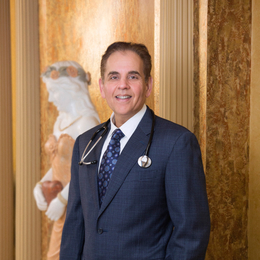
WHEN SPEAKING WITH A CARDIOLOGIST, the issues that are most commonly discussed are vascular disease and blockages in the arterial system. But ano ther po pular issue amo ng millions of Americans that isn’t frequently talked about is vein disease—which falls under the realm o f cardiovascular disease. Suburban Family had the chance to speak with Dr. Vic Bahal of Advanced Cardiology of South Jers ey about the caus es and treatment for chronic venous disease.
Understanding the disease
When veins operate properly, they carry blood north to the heart. B ut those with chronic venous disea se (CVD) experience something called reflux, when the blood trickles back down through the veins due to valves that are damaged as the result of aging, high blood pressure and obesity, to name a few reasons.
“You know when we talk about va scular dis ease we often refer to blockages in the arterial system,” says Dr. Bahal. “But—by and large—the veins are affected more in ou r legs than in our arteries.
“[Chronic] venous disease is preferentially more common than arterial disease and affects millions of America ns across the nation,” he says. “It is one of the most under-diagnosed, undertested and undertreated problems in America.
“We’re treati ng a lot of people with venous reflux dis ease and if it’s left untreated, can lead to disastrous consequences,” says Dr. Bahal.
Surprisin gly, there are more signs of vein disease than you’d expect. Symptomatic varicos e veins are a big indicator of vein disease, as well as tingling, pain, numbness, heaviness, c ramping, soreness or restlessness in the legs.
What are the causes?
As with many diseases, there are things that we do as humans that can help prevent our chances of developing CVD and those that can increase it.
Obesity plays a large f actor in developing CVD, but is not the only one. Smoking can increase your chances of developing the diseas e as well as being pregnant or having blood clots. But Dr. Bahal says, “Risk factor modification in this disease does not go that far.”
Professionals who spend a lot of time on their feet, like teac hers and nurses, will actually wear compression stockings even if they don’t have CVD. They just want to take the extra m easure to make sure that it doesn’t develop.
Unlike cardiac or arterial diseases that can be modified, vein disease i s more anatomic. Dr. Bahal says once vein disease does damage to your valves, it can’t be salvaged.
“Vein disease is more common in women than in m en. If it is left untreated, it can lead to breakdown of the skin and not only is that cosmetically unappealing, but more so it e xposes you to forming ulcers in your leg and as the skin breaks down you get infections,” says Dr. Bahal. “A condition called stasis dermatitis is the result of untreated venous insufficiency.”
Interestingly enough, men develop CVD later in life during their 60s and 70s , while wom en predominantly develop vein disease as early as age 40.
There is also a big hereditary risk with this disease. Dr. Bahal had a consultation with a patient recently who was 35 years old and had three other female family members who all had CVD just like her. “Fa mily history is very important,” says Dr. Bahal. “There is a genetic trans mission with this disease.”
Getting treatment
To find out if you have significant venous reflux—meaning more than .5 of a second— the Advanced Cardiology office will perform a venous duplex ultrasound to see how long that vein segment is refluxing (going in the wrong direction).
“The first line of defense is compression s tockings [which] the patient wears them for at least 90 days and then most insurances will approve [the] procedure I perform,” says Dr. Bahal. “[It’s] a quic k in-and-out procedure that takes about an hour or less in my office; no incision and it’s all done through a tiny needle. It’s cal led radiofrequency ablation of the veins whic h will cure the vein reflux.”
After the procedure, patients wear the compression stockings f or three days (on the treated leg) and then they are home free. If they choose not to get the procedure done, they will be wearing the s t oc kings for the rest of their lives.
“Being a preventative doctor as I am, we do a lot of medically necessary vein testing and the outcome has been very favorable,” says Dr. Bahal. “Legs look better, but disease pain symptoms can go away as early as two to three days after t he procedure has been done.
“If left untreated, it can create havoc; some people have lost their limbs because of this [disease]. It can be a catastrophic problem,” s ays Dr. Bahal. “This has to be on the forefront of medicine: the detection and treatment of this disease.” To find out more about vein diseas e or to have vein evaluation call Dr. Bahal at Advanced Cardiology of South Jersey at (856) 241-3838.
Advanced Cardiology of South Jersey
Mullica Hill
(856) 241-3838
acsj@comcast.net
advancedcardiologysj.com
Published (and copyrighted) in Suburban Family Magazine, Volume 8, Issue 12 (February 2018).
For more info on Suburban Family Magazine, click here.
For information about advertising in Suburban Family Magazine, click here.
To find out where to pick up your copy of Suburban Family Magazine, click here.




